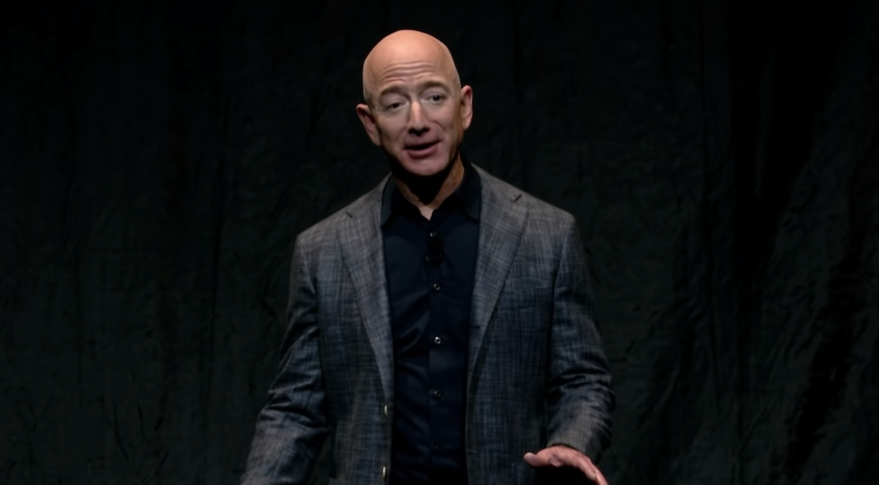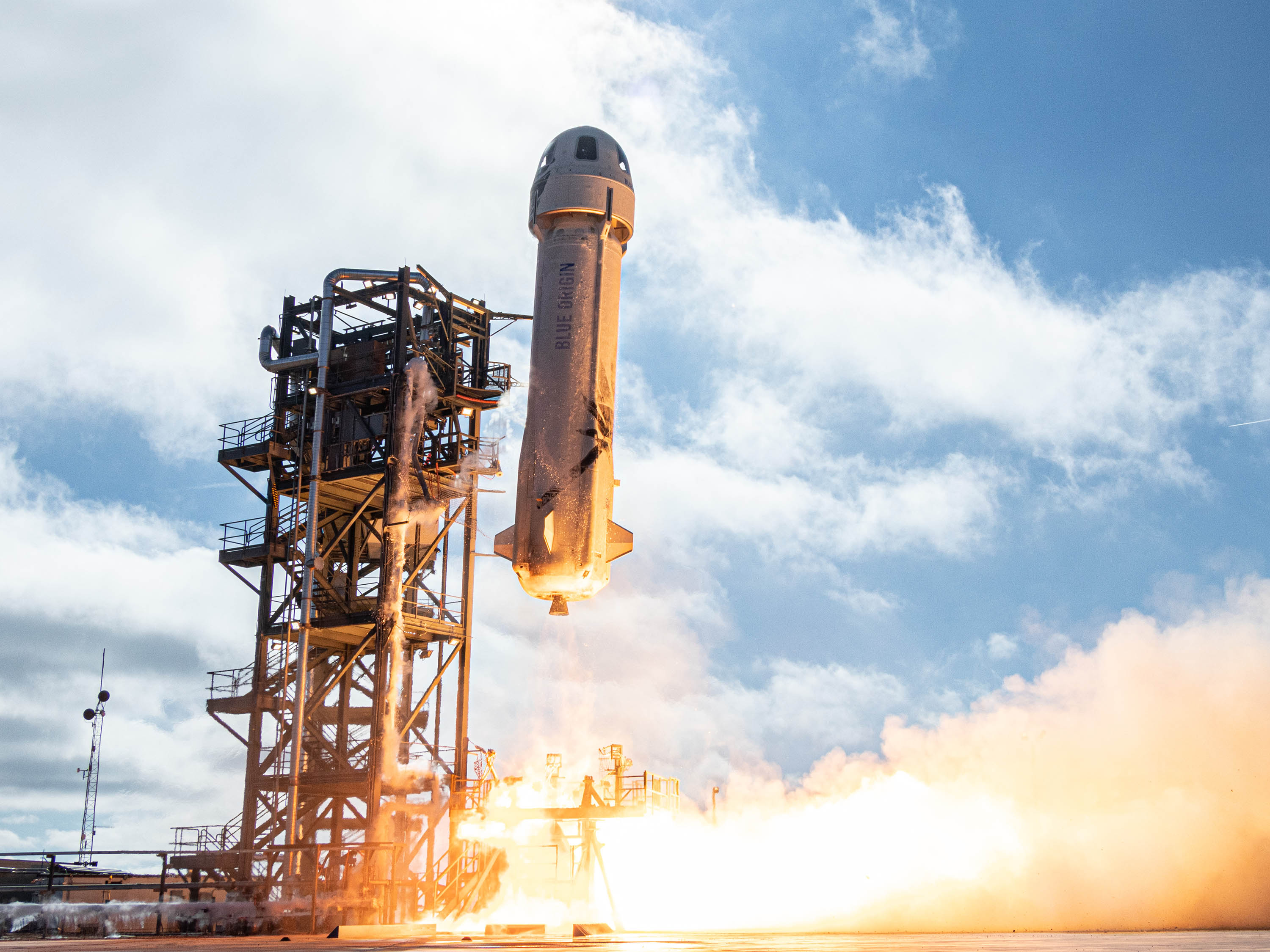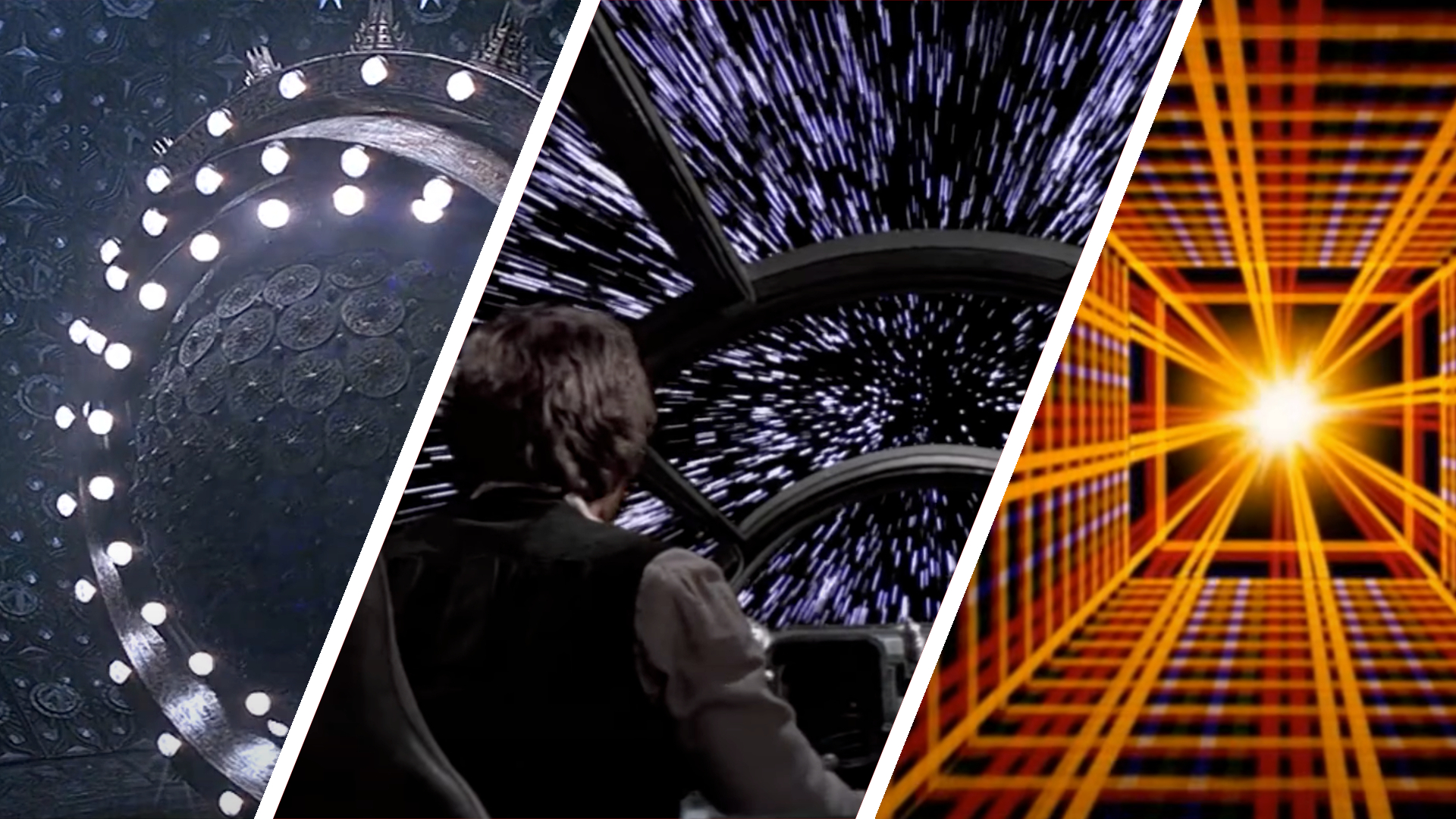Jeff Bezos: Blue Origin and Amazon founder
Jeff Bezos is not only the founder of Amazon, he's also a successful spaceflight entrepreneur.

Jeff Bezos is an internet entrepreneur and the founder of Blue Origin, a private spaceflight company. The company is known for its work on New Shepard — a reusable suborbital space rocket that includes a crew capsule for future paying passengers.
Blue Origin's New Shepard rocket is counting down for its first crewed flight on July 20, when it will launch Bezos and three others into space.
Related: Blue Origin will launch billionaire Jeff Bezos into space on July 20. Here's how to watch.
New Shepard made a world-first, first-stage rocket landing on land in 2015. Blue Origin is also working on a larger, orbital rocket called New Glenn that is expected to fly sometime toward the end of 2022.
Early years
Born to teenage parents, Bezos had an itinerant childhood that saw him grow up in several U.S. cities. He spent the summers at his grandfather's ranch in Texas.
"His grandfather sparked and indulged Jeff's fascination with educational games and toys, assisting him with the Heathkits and the other paraphernalia he constantly hauled home to the family garage," read a 2004 profile of Bezos in Wired magazine. (Heathkits were do-it-yourself kits for building electronic products.)
"Picture the scattered components of a robot; an open umbrella spine clad in aluminum foil for a solar cooking experiment; an ancient Hoover vacuum cleaner being transformed into a primitive hovercraft."
Bezos' energy for innovation kept his family busy as he was growing up, but his interests did not wane as he got older. Even as a teenager, Bezos wanted to get involved in space — not as an astronaut, but as an entrepreneur. It seemed a heady dream for a teenager in the 1970s and 1980s, but Bezos was determined. First, though, he would need to make a pile of money.
He chose the nascent field of computer science to make his fortune, getting his start working for several companies in the field. In 1994, Bezos founded Amazon with a plan to sell books over the Internet. From humble beginnings in his garage, Bezos expanded his e-business into an empire, selling everything from toasters to clothing to car parts. Amazon also burst into the e-publishing market with the Kindle, and brokered agreements with publishers to sell new electronic books at a reduced price compared to hardcovers.

Launching Blue Origin
In 2000, shortly after Bezos was named Time's Person of the Year for his work with Amazon, he turned his attention to space. He founded Blue Origin, which would develop a vertical-takeoff, vertical-landing rocket ship that could pop passengers into suborbital space.
Bezos kept his plans under wraps for years, Space.com previously reported. Most of the company's information came out through mandatory disclosures to the Federal Aviation Administration and NASA as Bezos sought regulatory approvals and funding.
It wasn't until the late 2000s when Blue Origin had a detailed website and promotional materials available on it, in stark contrast to other billionaire-run spaceflight companies, such as SpaceX and Virgin Galactic.
In 2011, Blue Origin faced a major setback, when a vehicle was destroyed during a test. Bezos revealed the failure a week after the fact in a short blog post on Blue Origin's website, explaining that a flight instability affected the angle of attack and ultimately caused the vehicle to crash.
In October 2012, Blue Origin revealed it had conducted a successful rocket escape test, which is a key milestone in rating the spacecraft safe for humans to ride. Although the system is supposed to work on the suborbital spacecraft, the company also plans to use the technology for its orbital flights.
Related: Photos: Glimpses of secretive Blue Origin's private spaceships

Getting to space
One of Blue Origin's ultimate goals is to commercially launch a rocket called New Shepard — named after Alan Shepard, the first American to fly in space in 1961. The rocket has a crew module, as well as a propulsion section that boosts the ship for the first few minutes of flight.
Related: Infographic: Blue Origin's secretive space vehicle explained
Blue Origin received $22 million in 2011 under NASA's Commercial Crew Development (CCDev) program to spur the development of New Shepard's design and escape system. All told, the company garnered about $26 million from NASA in the first two rounds of funding, but was not included in subsequent rounds. (NASA ultimately selected SpaceX's Dragon and Boeing's CST-100 as the spacecraft to begin bringing crews to the International Space Station.)
The rocket's reusable first stage was the first in the world to touch down safely on land, in 2015, and has made several successful test flights since then. A Dec. 12, 2017, flight successfully carried a mannequin called Skywalker to space and back, as well as performed several revenue-generating experiments.
Related: Blue Origin's amazing NS-11 New Shepard test flight in photos
New Shepard's seventh test launch on Oct. 13, 2020 reached a maximum altitude of 346,000 feet (105 kilometers), Space.com previously reported.
On Jan. 14, 2021, Blue Origin launched its upgraded New Shepard spacecraft for astronauts, the RSS First Step, Space.com previously reported. The capsule reached a maximum altitude of 350,827 feet (106,932 meters), according to Blue Origin. That's about 66 miles (107 km) up, above the traditionally recognized 62-mile (100 km) border of space.
Most recently, on April 14, 2021, the company launched the 15th uncrewed test flight of the reusable New Shepard vehicle, Space.com reported. The mission mimicked what should occur once Blue Origin starts flying passengers. Before the flight, two company employees entered the capsule to practice the procedures that future astronauts will follow before launch; the faux-astronauts then exited the vehicle before the flight, then returned to the capsule to practice post-landing procedures once the capsule returned.
On July 20, New Shepard will carry its first four passengers to suborbital space. The passengers are Bezos, his brother Mark, Mercury 13 aviator Wally Funk, and 18-year-old physics student Oliver Daemen. Daemen is taking the place of the still unnamed auction winner who paid $28 million for a seat on this flight, but had a scheduling conflict.
Related: Jeff Bezos will join passengers launching into space on Blue Origin's 1st crewed flight
Related: Blue Origin will launch an 18-year-old as its final passenger on 1st crewed flight
Work outside of spaceflight
Amazon was named the largest online shopping retailer worldwide in 2013. Bezos received a contract valued at $600 million that year from the Central Intelligence Agency on behalf of Amazon Web Services. He also bought the Washington Post for $250 million, and met with Richard Branson (chair of Virgin Galactic) to discuss commercial spaceflight opportunities.
Bezos sold about 2 million of his Amazon shares in 2016 (worth $671 million and $756.7 million in two separate transactions). The next year, he hired 130,000 new employees over several company distribution centers. He sold about $1 billion in Amazon stock in late 2017, and initiated another sale in early 2018 to raise cash for Blue Origin.
President Donald Trump complained in 2018 that Amazon (and Bezos) were avoiding taxes and accused the company of anti-competitive business practices. The company's share price temporarily fell by 9%. The share prices increased again, however, around the same time that Stanford University showed that Trump had little power to regulate Amazon in the near term.
Additional resources
- Learn more about the Blue Origin company on their website.
- Keep up with their latest news and announcements by following Blue Origin on twitter.
- Find out more about NASA's contracts with Blue Origin on NASA's Blue Origin website.
This article was updated on July 15, 2021 by Space.com Reference Editor Kimberly Hickok.
Join our Space Forums to keep talking space on the latest missions, night sky and more! And if you have a news tip, correction or comment, let us know at: community@space.com.
Get the Space.com Newsletter
Breaking space news, the latest updates on rocket launches, skywatching events and more!

Elizabeth Howell (she/her), Ph.D., was a staff writer in the spaceflight channel between 2022 and 2024 specializing in Canadian space news. She was contributing writer for Space.com for 10 years from 2012 to 2024. Elizabeth's reporting includes multiple exclusives with the White House, leading world coverage about a lost-and-found space tomato on the International Space Station, witnessing five human spaceflight launches on two continents, flying parabolic, working inside a spacesuit, and participating in a simulated Mars mission. Her latest book, "Why Am I Taller?" (ECW Press, 2022) is co-written with astronaut Dave Williams.










